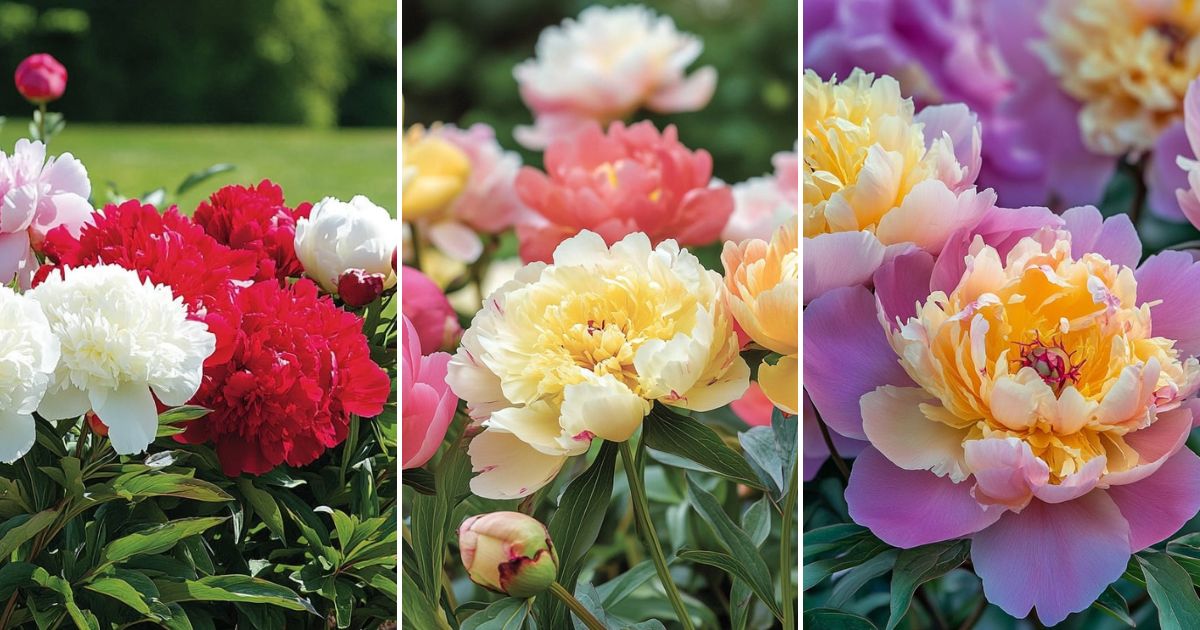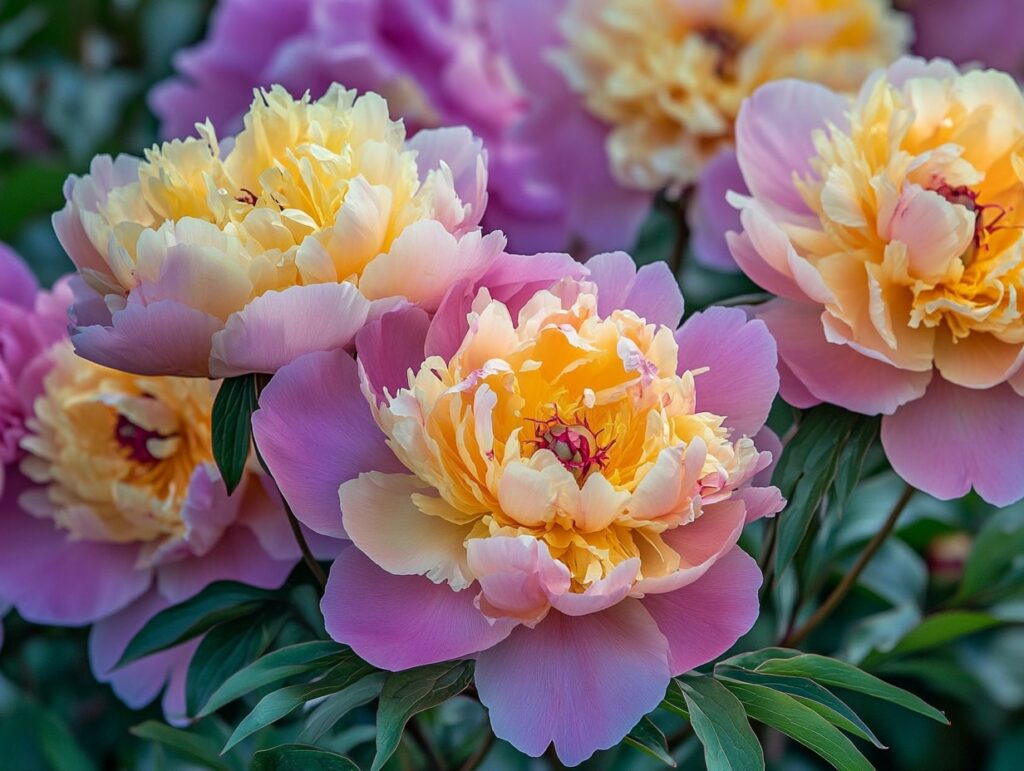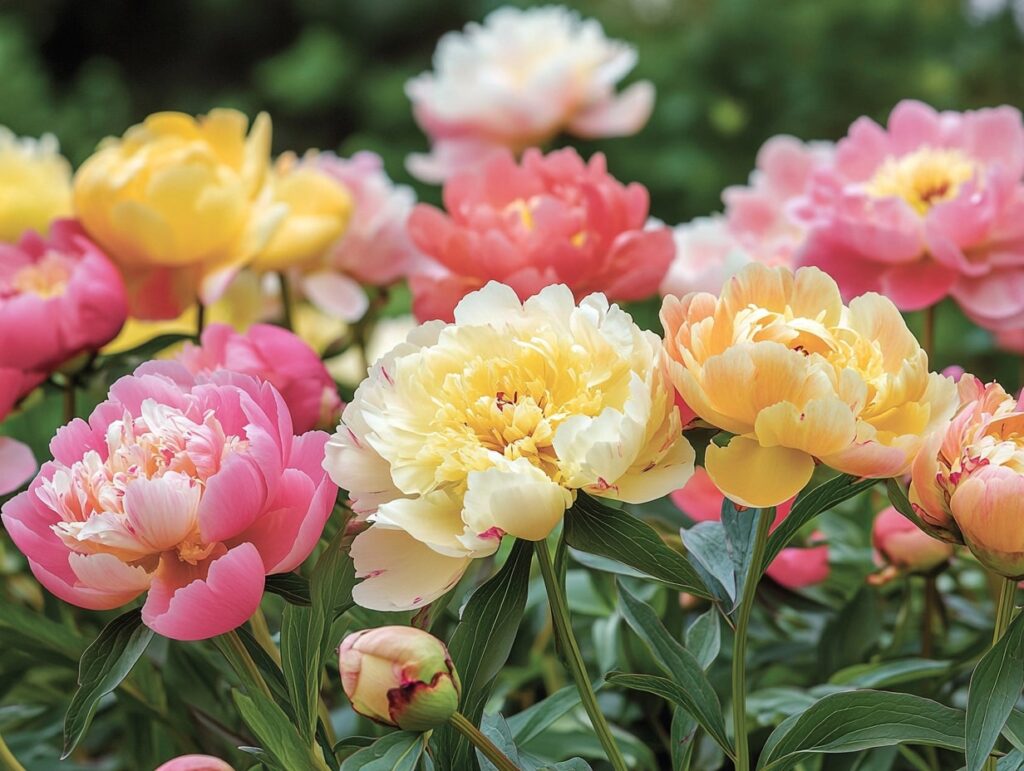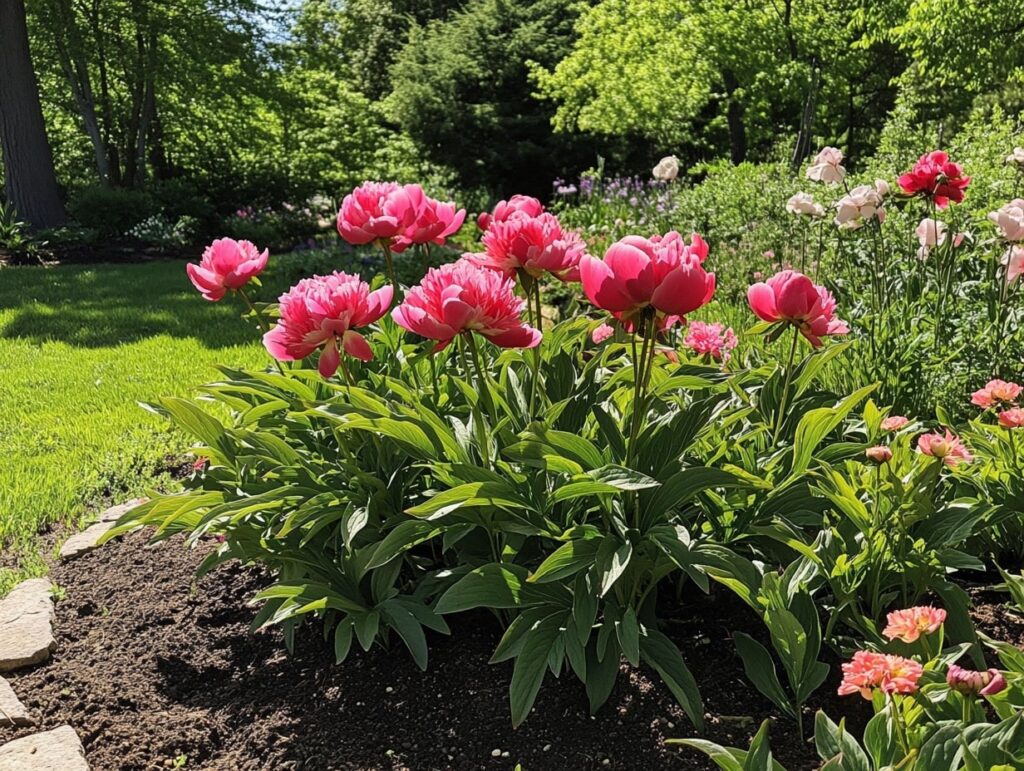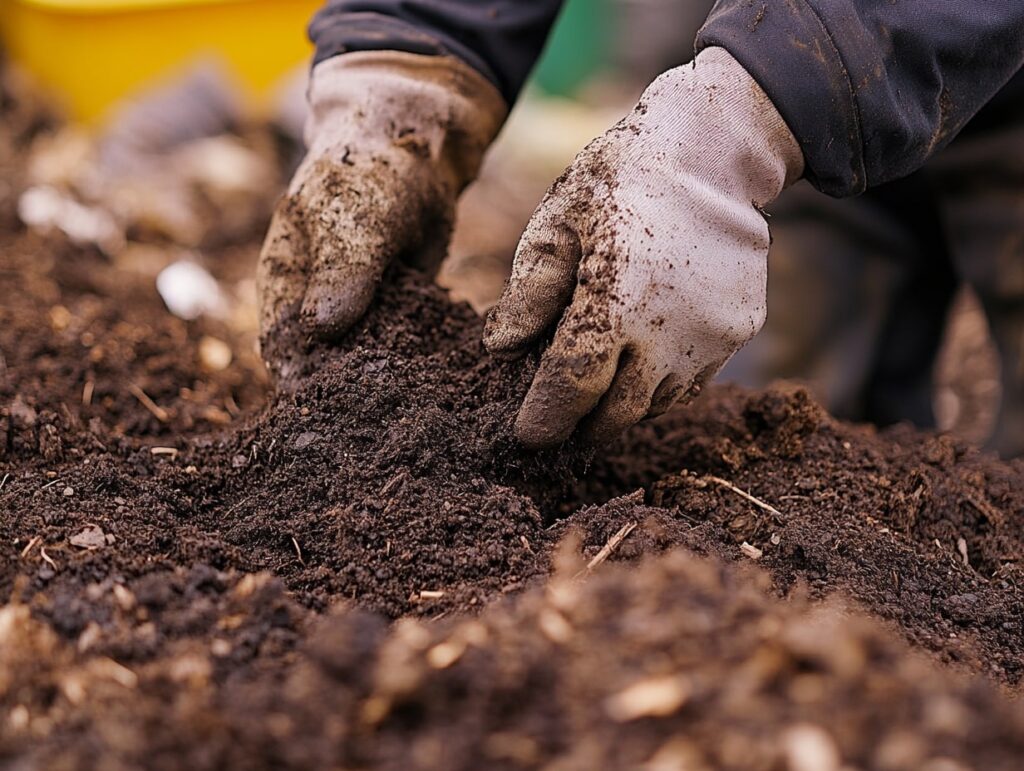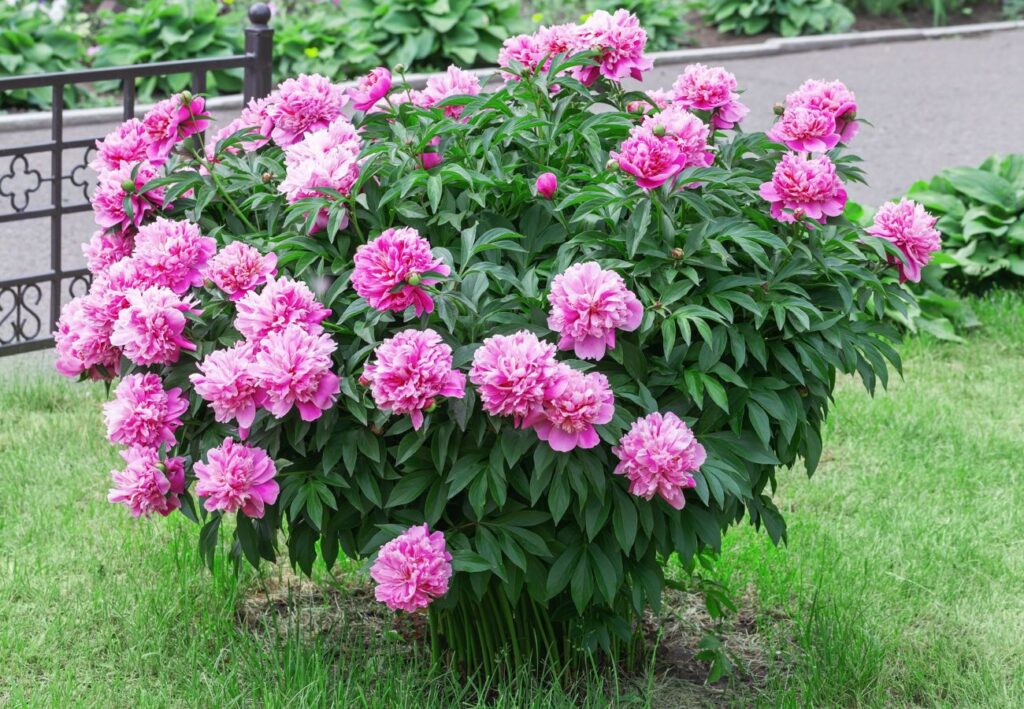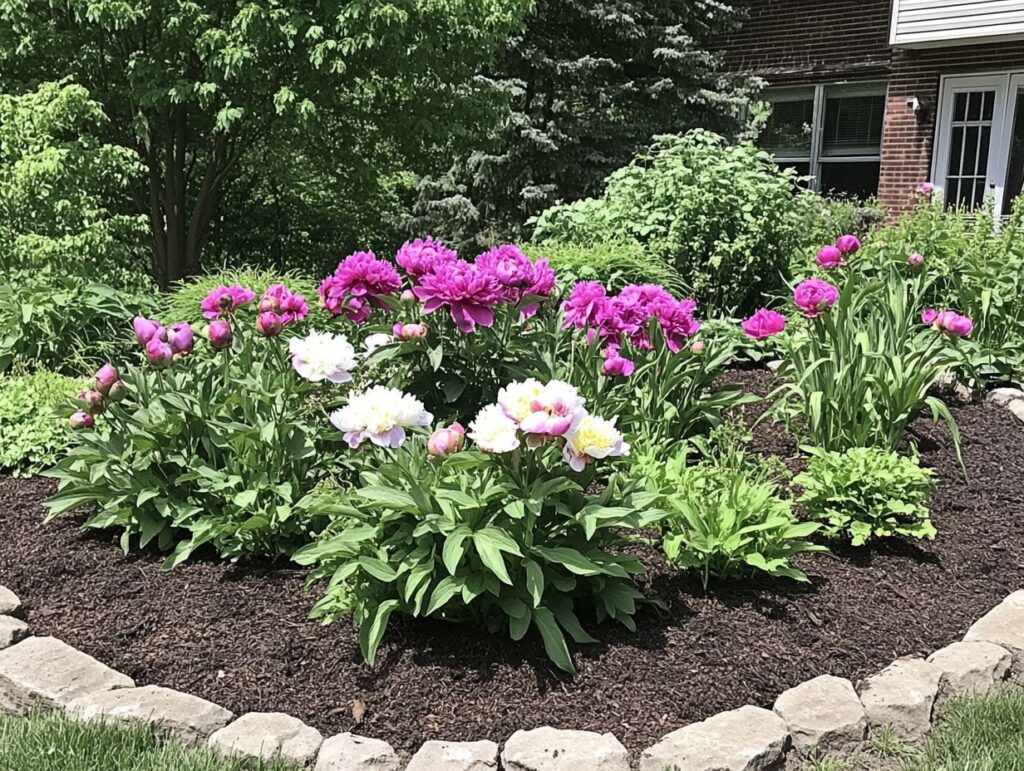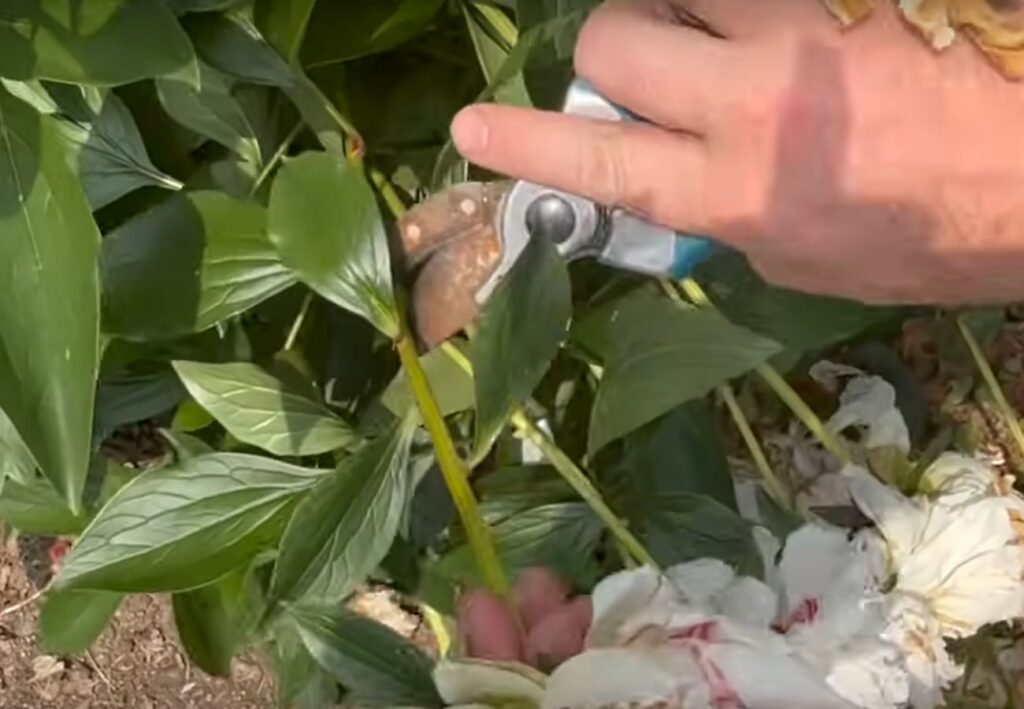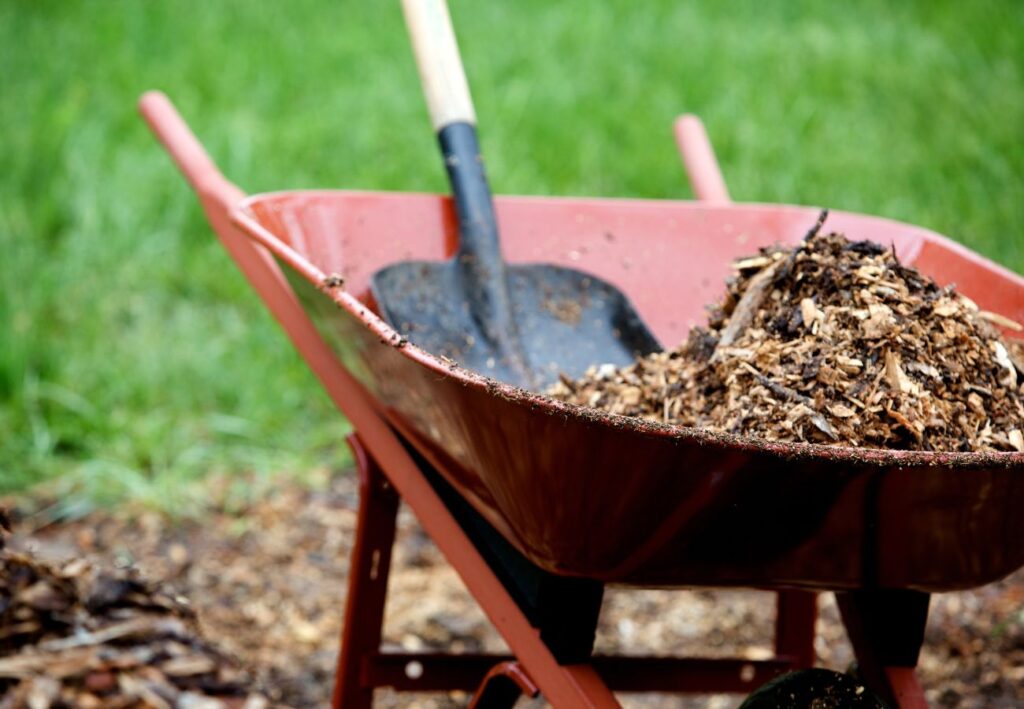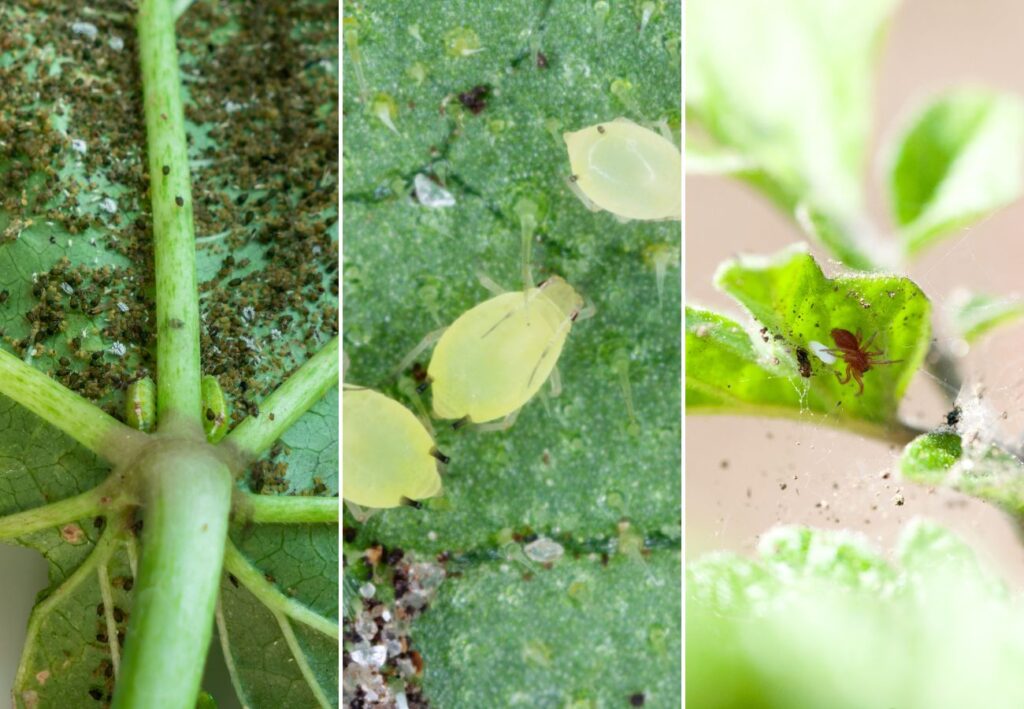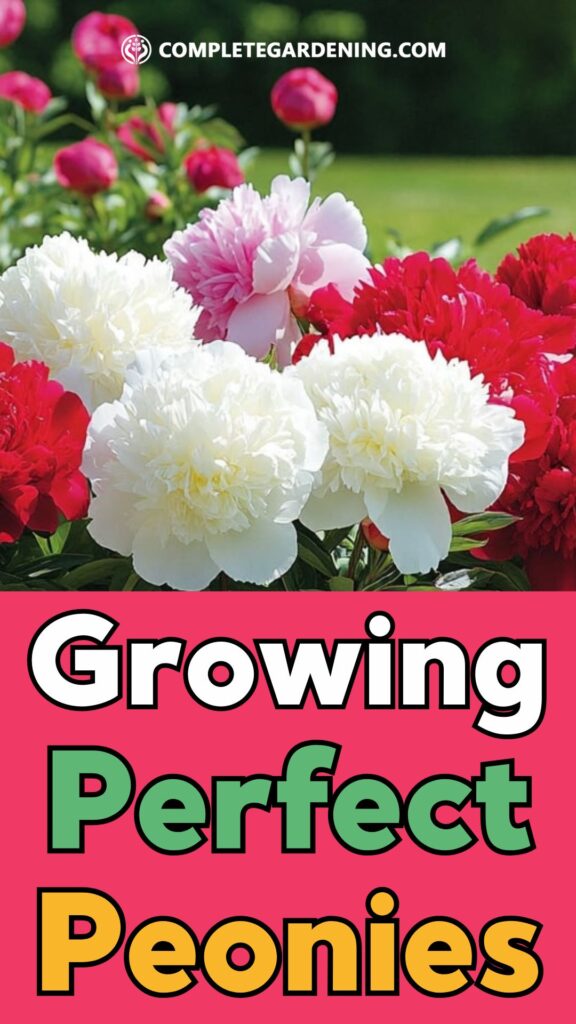Peonies, with their lush and luxurious blooms, are the epitome of garden elegance. But what if I told you that growing these captivating flowers is easier than you think?
This article will guide you through the enchanting world of peonies, revealing the straightforward steps to achieving a garden filled with these magnificent blooms.
From selecting the perfect spot to mastering soil preparation and care, we’ve got you covered. No need to be overwhelmed; we’ll simplify the process and make sure you’re well-equipped to nurture your peonies to perfection.
Ready to transform your garden into a stunning showcase of peony beauty? Let’s dive into the essential steps and uncover the secrets to growing these iconic flowers with confidence and ease.
Choosing the Right Peony Varieties – Herbaceous Peonies
Herbaceous peonies are the most popular and traditional type. They die back to the ground each winter and regrow in the spring. These peonies are known for their large, double blooms and broad color range, from white to deep red.
They thrive in well-drained soil with full sunlight. They make excellent cut flowers due to their long stems. Herbaceous peonies also have a lovely fragrance, adding another layer of beauty to your garden. Choose varieties like Sarah Bernhardt or Karl Rosenfield for classic charm.
Tree Peonies
Tree peonies have a woody stem structure and do not die back in winter. They produce larger blooms than herbaceous types, often reaching up to 8 inches in diameter. This variety offers stunning colors, including shades of yellow that are rare among herbaceous peonies.
These peonies prefer partial shade and must be planted deeper than their herbaceous cousins to thrive. Tree peonies also bloom earlier in the season, typically late spring, providing an extended flowering period in your garden.
Varieties like Hana Kisoi or Kamata Fuji can be great choices.
Intersectional (Itoh) Peonies
Intersectional, or Itoh peonies, are hybrids between herbaceous and tree peonies. They combine the best traits of both types, offering large, vibrant blooms on sturdy stems.
These plants die back in winter like herbaceous peonies but have the robust foliage and extended bloom time of tree peonies.
They are hardy and can tolerate various conditions, though they prefer full sun to partial shade. Intersectional peonies often have more unique colors and patterns, including variegated blooms.
Bartzella and Cora Louise are popular varieties that can add a splash of color to your garden.
Planting Your Peonies
Peonies thrive best in a sunny location. Aim to provide at least 6-8 hours of direct sunlight daily.
Avoid planting your peonies near large trees or shrubs, as their roots can compete for nutrients.
Ensure good air circulation around the plants to prevent fungal diseases.
A well-drained location is also essential; standing water can cause root rot.
Consider the layout of your garden and plant in a place where they can grow undisturbed for years.
Soil Preparation
Proper soil preparation is key to successful peony growth.
Peonies prefer deep, fertile, and well-drained soil.
Before planting, work in plenty of organic matter like compost or aged manure to enrich the soil.
Aim for a soil pH between 6.5 and 7.0.
Use a soil test kit to check and amend the pH if necessary.
Loosen the soil to a depth of at least 12-18 inches to allow the roots to establish well.
Planting Procedure
Plant peony roots in the fall, preferably from late September to early October.
Dig a hole about 2 feet wide and 1.5 feet deep.
Place the root with the “eyes” (buds) facing upward and cover lightly with soil.
Ensure the eyes are no more than 2 inches below the soil surface to avoid planting too deeply.
Water thoroughly after planting and apply a layer of mulch to conserve moisture and regulate soil temperature.
Caring for Peonies
Properly caring for peonies involves managing watering, fertilizing, and weed control. Here are the essential tips to help you ensure your peonies thrive.
Watering Essentials
Peonies need the right amount of water to stay healthy. Water deeply once a week, especially during dry periods. Aim to soak the soil to a depth of 12-18 inches.
Use mulch to maintain soil moisture.
Check soil moisture regularly by inserting your finger into the soil; it should be moist, not soggy.
Avoid watering the foliage, as this can lead to fungal diseases. Water directly at the base of the plant instead.
Fertilizing for Growth
Peonies benefit from a balanced fertilizer. Use a 10-10-10 fertilizer in spring when new growth appears.
Apply 1/2 to 1 cup of fertilizer per peony plant.
Spread it evenly around the plant, but keep it away from the base.
A second application can be done after blooming, but it’s not essential. Organic compost can also be used to enrich the soil. Avoid excessive nitrogen, as it can lead to poor flowering.
Mulching and Weed Control
Mulching peonies helps retain moisture and suppress weeds.
Apply a 2-3 inch layer of organic mulch, such as straw or pine needles, around your plants.
Leave space around the base of the plant to prevent rot. Regularly remove weeds by hand to avoid disturbing peony roots.
Consistent weeding prevents competition for nutrients and keeps your peonies healthy.
Pruning and Maintenance
Proper pruning and regular maintenance of your peonies ensure healthy growth and abundant blooms. Keep an eye on deadheading and trimming during the growing season and prepare your peonies for winter to maximize their beauty and vitality.
Deadheading and Trimming
Deadheading involves removing spent flowers to encourage more blooms and maintain the plant’s appearance. Use sharp, clean pruning shears and snip the spent blooms just above the first set of healthy leaves.
Trimming the plant helps direct energy to stronger stems. Early in the season, cut back any weak or damaged growth. Regular inspection and removal of dead or diseased foliage prevent pests and diseases.
Aim for a neat, airy plant structure to promote good air circulation, which reduces the risk of fungal infections.
Winter Care
Prepare your peonies for winter by cutting back the stems to ground level after the first hard frost. This helps the plant conserve energy and reduces the risk of disease. Mulch the base with a thick layer of straw or leaves to insulate the roots from freezing temperatures.
In areas with mild winters, a light mulch layer is sufficient. Remove the mulch in early spring to encourage new growth. Avoid heavy mulching, as it can retain moisture and promote rot. Proper winter care ensures that your peonies emerge strong and vibrant in the spring.
Troubleshooting Common Issues
Growing peonies can sometimes come with challenges such as pests and diseases. Addressing these issues effectively ensures that your peonies remain healthy and vibrant.
Pest Management
Peony plants attract various pests like aphids, thrips, and spider mites. These tiny creatures can cause significant damage to your plants if not managed promptly.
Aphids are small, green insects that suck sap from the plant, leading to stunted growth and curled leaves. To manage aphids, use a strong spray of water to dislodge them or apply insecticidal soap.
Thrips are another common pest, recognizable by their elongated bodies and fast movements. They can cause discoloration and deformation of the peony blooms. Introducing beneficial insects like ladybugs can help control thrip populations.
Spider mites thrive in dry conditions and create small webs on the undersides of leaves. They suck the leaf’s juice, causing speckled yellowing. Regularly misting your plants and keeping the foliage clean can reduce spider mite infestations.
Disease Prevention
Peonies are susceptible to diseases such as botrytis blight and powdery mildew. Botrytis blight is a fungal disease that causes grey mold on the stems, leaves, and flowers. Ensure good air circulation around your plants and avoid overhead watering to keep the foliage dry.
Pruning and removing any infected parts can help stop the spread of this disease.
Powdery mildew appears as a white, powdery coating on leaves and stems. This usually occurs in shaded areas with poor air circulation. Spraying a solution of baking soda and water on the affected parts can help manage this disease.
Maintaining proper spacing and practicing good garden hygiene are crucial steps in preventing these common problems. Regularly inspecting your plants for early signs of disease can help you take swift action.
Choosing the right peony varieties for your garden involves considering factors like bloom type, color, growth habit, and care needs.
Whether you opt for the traditional beauty of herbaceous peonies, the exotic charm of tree peonies, or the unique hybrids of Itoh peonies, each type offers distinct features that can enhance your garden’s appeal.
With proper planting, care, and maintenance, your peonies will reward you with stunning blooms and vibrant colors year after year, adding a touch of elegance to your outdoor space.
